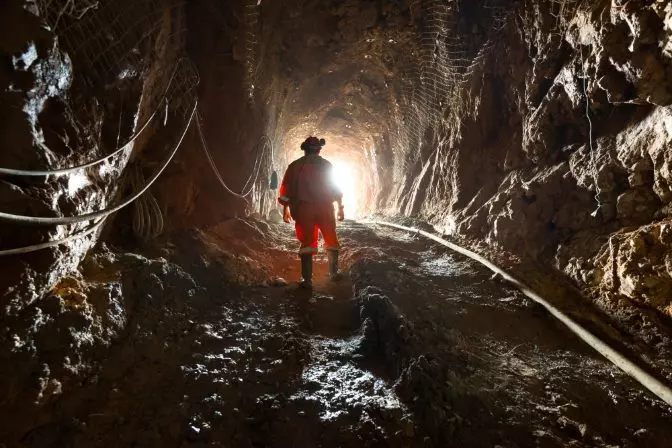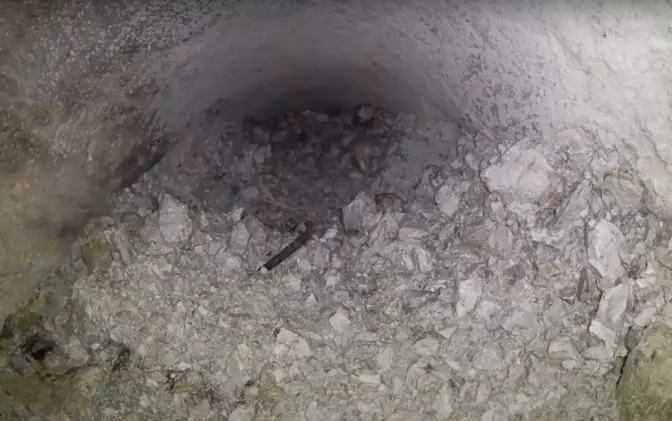# What Is an Ore Pass in Mining?
An ore pass is essentially a mining shaft designed to facilitate the transportation of ore and mining waste from various levels of a mine. It serves as a practical and efficient means of transferring materials while reducing the need for extensive hauling distances between different levels.

## Key Considerations When Constructing an Ore Pass
Ore passes rely on gravity to move materials from one level to another. Two primary methods are commonly used for constructing ore passes: the drill-and-blast method and the mechanical method.
In the drill-and-blast method, miners drill a hole in the intended location for the ore pass, then place explosives to create the pass. Alternatively, the mechanical method employs a raise borer, which drills a circular hole between mine levels.
When planning the construction of an ore pass, several factors must be taken into account:
- **Location**: The ideal placement of an ore pass is at a point where it intersects with mining levels. This ensures easy access to address potential blockages or "hang-ups" within the system. Hang-ups are a frequent issue in underground mining. The stress conditions and rock type must also be evaluated. Placing an ore pass in weak host rock can make it more prone to hang-ups. Additionally, ore passes should be positioned away from the mining face to preserve the mine's structural integrity.
- **Length**: Longer ore passes are more vulnerable to degradation and are more expensive to construct. Typically, short ore passes ranging from 10 to 100 meters are built in mines, though some can extend up to 300 meters.
- **Dimensions**: The size of the ore pass is influenced by the shape of the opening and the size of the materials passing through.
- **Shape**: Ore passes can be square, rectangular, or circular. Those created using a raise borer are usually circular.
- **Orientation**: Ore passes can be vertical or inclined, depending on the mine layout, the materials being transported, and the degree of fragmentation of the materials.
- **Support**: Support mechanisms such as rebar and liners, including shotcrete, are often used to stabilize ore passes.
## Types of Ore Pass Systems
Two main types of ore pass systems are utilized in the mining industry: the flow-through ore pass system and the full ore pass system.
In both systems, ore and waste are dumped into the ore pass and eventually reach the draw point, where the ore is transported by loaders, conveyors, or rail cars to an underground stockpile.
### Flow-Through Ore Pass System
In flow-through systems, ore flows continuously down to the draw point. This system is particularly useful when the ore contains a high percentage of fines, which prevents hang-ups by ensuring continuous flow. It is also beneficial when broken rock is processed through mills at a faster rate than the underground ore production in a full system. However, due to the constant flow of materials, these systems are more prone to wear and tear, requiring regular maintenance and reinforcement.
### Full Ore Pass System
In full ore pass systems, a consistent amount of ore is maintained within the ore pass at all times. This approach helps prevent degradation of the ore pass, reduces the risk of rock failures, and mitigates mining-related seismic events. However, the risk of hang-ups increases since materials do not flow consistently. Fines settle and oxidize, leading to blockages. To manage this, draw times from the ore pass are extended to maintain optimal material levels.

## Monitoring Ore Passes
Regular monitoring of ore passes is crucial to ensure their structural integrity, prevent seismic events, and avoid overfilling. Inspections typically focus on the following aspects:
- Material levels
- Wall quality
- Liner condition
- Control equipment functionality
Failure to monitor ore passes can result in blockages, structural damage, and even endangerment to miners. Regular inspections help prevent hang-ups and maintain mine safety.
## Using Drones to Investigate Ore Pass Blockages
A significant blockage in an ore pass can halt operations entirely. In 2023, personnel at a major mining site in Colorado encountered a massive hang-up that completely blocked the ore pass. Initial efforts to locate the blockage using traditional methods were unsuccessful.
To resolve the issue, the team turned to the Elios 3 drone. Equipped with real-time visual feedback and a 3D Live Model, the drone provided detailed insights into the ore pass's interior. Within ten minutes, the geolocational data from the 3D Live Map pinpointed the exact location of the blockage.
This case underscores the importance of innovative tools in modern mining operations. The Elios 3 not only identified the blockage but also allowed operators to strategize effectively, minimizing downtime and maximizing efficiency.
---
With the right technology and proactive monitoring, ore pass issues can be addressed swiftly and safely, ensuring the continued productivity of mining operations.